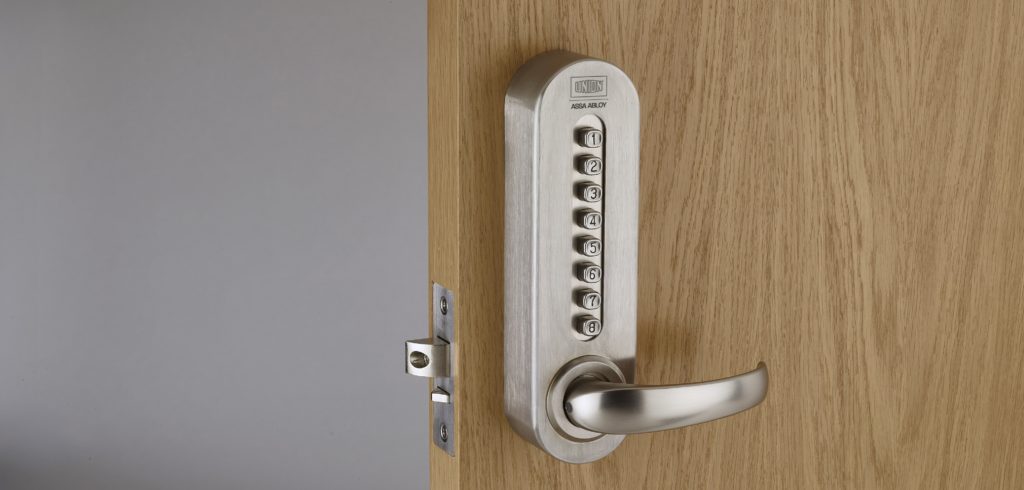Craig Birch, product category manager at Union, explains why the long-held perception of push button locks as a security device for sports stadia continues to put people and assets at risk, and the latest changes to the BS 8607 standards that will help overcome this.
Push button locks are used in stadia all around the world to help protect assets and people. However, it is an uncomfortable truth that these products very rarely offer any real level of security. They are, in fact, generally more a means of access control, yet for many years push button locks have been purchased as a means of securing an area or valuables. This is a commonly-held misconception of the purpose a push button lock should serve.
Put simply, push button locks are vulnerable to physical attack. A strong shoulder charge or kick would likely force open most old-fashioned push button locks – not ideal for a device that’s thought of by many as a security product.

This is because the locking device typically used with traditional push button locks is simply a tubular latch. This can be easily pushed back and does not offer any sideload resistance. Furthermore, many push button locks can be overridden because manufacturers do not supply the product with a code that differs from the original factory setting. As a result, there is a risk that many push button locks will unlock from the same code, unless the initiative has been taken to change it from the one that it was provided with.
Many have tried to overcome the shortcomings of the traditional push button lock by using two devices on a single application. For instance, many will often use a British Standard lock with a key, plus a low-security access control device as well. However, operators are then faced with the task of deciding who needs to access this room and how many keys need to be issued, all of which comes at a cost and presents other opportunities for security to be compromised in a stadium environment.
However, BS 8607 – the standard for mechanically operated push button locksets – offers a series of grades that these locks can meet for strength and robustness. Introduced only recently, grade 5 is the newest and most stringent level for delivering assured security and access control. But what does it offer that grade 4 does not?
Both grade 4 and grade 5 of BS 8607 stipulate that products meeting these standards must be suitable for ‘applications where security, abuse and usage levels are expected to be equivalent to BS 3621’, which relates to thief-resistant locks.
But if the security, abuse and usage levels are the same, what then is the difference between the two grades?
Put simply, those rated as grade 4 can only achieve this standard with the help of an integral additional locking unit. So, with a grade 4 product, users must lock and unlock the solution from the inside with a key, and then operate the push button from the outside to unlock a door.
In contrast, a mechanically operated push button lockset that meets grade 5 standards provides a ‘one-stop’ security and access control solution; one that does not require a separate locking unit. With a grade 5 product, the latch and lock are integrated and tested together, without the need for an additional key. This means that, when it shuts, a grade 5 solution automatically locks. Then, should you need to exit a room, it’s simply a one handle operation to unlock the door.
While it’s intended that both grade 4 and 5 devices offer the same resistance to attack and it’s simply the way it is locked that is different, the fact that a user has to physically lock a door themselves with a grade 4 product means the technology is reliant on key holders to secure the premises themselves. Ultimately, those in charge of a stadium’s security measures need to take responsibility and ownership for this. But with a grade 5 solution, security is assured as the door will lock automatically.
Essentially, grade 5 has been introduced because it provides a BSI Kitemark approved certification. This means any mechanically operated push button locks advertised as meeting grade 5 standards will be fully tested and inspected to this certification, offering complete peace of mind to those responsible for maintaining security and access control in a stadium environment.
To meet this need for a push button lock that can deliver both access control and security, Union has developed CodeGUARD 5. The product is Union’s newest push button lock, which meets the latest grade for BS 8607 – grade 5. Union is the first manufacturer to answer this need with a product that meets this standard.





